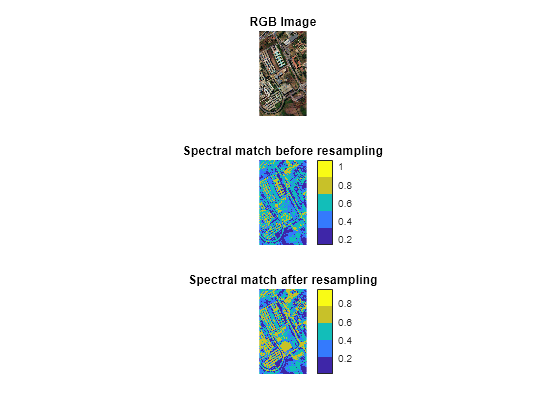resampleSignature
Syntax
Description
The resampleSignature function resamples the reflectance
spectrum to the required wavelengths using interpolation. You can use spectral signature
resampling to align two spectral signatures to a common spectral grid, improving the accuracy
of subsequent applications like spectral matching and target detection. You can also use
spectral signature resampling to reduce the spectral dimension of the reflectance spectrum
according to the needs of your application, improving efficiency.
resampledRef = resampleSignature(reflectance,reqWavelength)reflectance to the required
wavelengths reqWavelength using interpolation.
resampledRef = resampleSignature(reflectance,reqWavelength,origWavelength)origWavelength of the spectral
signature reflectance.
[
returns the wavelengths resampledRef,commonWavelength,index] = resampleSignature(___)commonWavelength present in both the
reflectance spectrum and the required wavelengths, and the start and end indices of the
common wavelengths in reqWavelength, using any combination of input
arguments from previous syntaxes.
Note
This function requires the Hyperspectral Imaging Library for Image Processing Toolbox™. You can install the Hyperspectral Imaging Library for Image Processing Toolbox from Add-On Explorer. For more information about installing add-ons, see Get and Manage Add-Ons.
The Hyperspectral Imaging Library for Image Processing Toolbox requires desktop MATLAB®, as MATLAB Online™ and MATLAB Mobile™ do not support the library.
Examples
Input Arguments
Output Arguments
Version History
Introduced in R2024a
